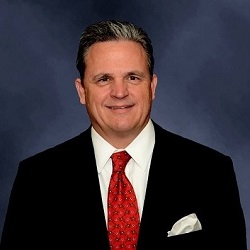Top-Level Takeaways
-
- A USDA program presents an opportunity for credit unions and CUSOs to help rural communities.
- Credit union consortiums have funded 25 loans in six states and created more than 1,500 jobs and $72 million in wages.
In December 2017, a credit union based in Louisiana became the lead lender in a $112.6 million loan supporting the construction of a biorefinery in Storey County, NV. The loan, made by a consortium of credit unions and guaranteed through the Biorefinery, Renewable Chemical, and Biobased Product Manufacturing Assistance Program, was the largest ever made through the highly specialized USDA program.
How did this happen? Through the power of collaboration.
When Co-Opportunity Knocks, Answer

Jeremy Gilpin is the executive vice president of Greater Commercial Lending, the wholly owned CUSO of Greater Nevada Credit Union that is servicing the loan as part of the lending consortium. Gilpin also chairs the National Rural Lenders Association, which works directly with USDA national directors as well as political leaders to ensure financing options remain available to rural communities. He says the biorefinery project and other USDA loan opportunities have come to his attention organically as he’s advocated over the past 20 years for USDA programs.
“The Section 9003 Program has always interested me as there are a lot of good projects out there, but there’s never really been a decent structure to finance them,” Gilpin says.
Traditionally, financing for large projects like this one headed by Ryze Renewables Reno, LLC, for the construction of a refinery that will convert distillers corn oil from ethanol plants into renewable diesel is secured through a bond process that includes both the guaranteed and non-guaranteed portion of the loan. This is an ill-fitting approach for secondary market investors that want to participate in one or the other exclusively.
With the involvement of a small group of credit unions and CUSOs, however, Gilpin was able to develop a new loan structure.
A New Structure
“We removed greed from the picture when credit unions got involved,” Gilpin says.
In a traditional structure for a loan like Ryze’s, borrowers would be asked to pay steep upfront costs that could average $6 million to $10 million over the course of 15 months. Through the consortium of credit unions, however, Ryze paid a modest 1% of the loan amount in lieu of the costly upfront, monthly, and closing fees most large banks charge.
But the new loan structure isn’t just fair for borrowers, it’s equitable for lenders, too. They each take part of the non-guaranteed portion of the loan and split the premium from the guaranteed sale pro-rata.
“If there are five credit unions involved, each of us gets 20% of the premium, which makes our rate of return 25% on day one,” Gilpin says.
In Search Of The Right Credit Unions
CU Capital Market Solutions (CU CMS), a CUSO focused on developing services that benefit credit unions with low-income designations, had a key role in bringing together the Ryze loan’s lead lender, Jefferson Financial Federal Credit Union ($890.3M, Metairie, LA), and other credit union participants.

It all started with an article that ran on CreditUnions.com and in Callahan’s Credit Union Strategy & Performance publication three years ago. The article covered the commercial and merchant services offered by Greater Nevada Credit Union via a Q&A with Jeremy Gilpin, who is also the vice president of business services for the credit union.
Bill Mullally, senior managing director of CU CMS, read the article and reached out to Gilpin to learn more. And a new partnership began.
“My role is simple,” Mullally says. “I find credit unions who are looking to increase their member business loans through participations.”
CU CMS does other types of commercial loan participations, but it relies on Gilpin’s expertise and solid reputation for USDA guaranteed loans.
To find credit unions that are fit for USDA lending, Mullally and his team focus on credit unions that take a holistic approach to their business relationships.
“Credit unions that have a business services or commercial services department are more amenable to participations whether those are USDA, SBA, or commercial real estate,” Mullally says.
Beyond providing a loan, these credit unions provide payment processing, business checking, and more to build a relationship as a business’ primary financial institution. They also possess internal expertise when it comes to business lending, which helps in evaluating potential participations.
“A lot of bright, experienced people are running business service areas for credit unions,” Mullally says. “Many started in banking and have moved into the cooperative industry.”
Once CU CMS finds a potential credit union participant, it introduces the credit union to Gilpin and Greater Commercial Lending.
“We seek credit unions who are explicitly interested in participating in USDA loans, so a consortium is ready for a big opportunity like the Ryze loan,” Mullally says.
CU CMS stays with the consortium throughout the loan process, answering common questions and filtering complex questions through Gilpin’s team.
“These are loans that might not get done without credit union involvement because of the rural areas they are in,” Mullally says.
Part Of The Equation
Jefferson Financial, which is member of CU Capital Market Solutions, credits CU CMS with bringing together the credit union and Greater Commercial Lending. Although the credit union was familiar with USDA lending, taking the role of lead lender on a $112.6 million biorefinery loan was new ground. But thanks to the tutelage provided by Gilpin, the process was new but not overwhelming.
“Jeremy made life easy for us,” says Mark Rosa, CEO of Jefferson Financial.
And according to Rosa, the loan provided a nice increase to not only the credit union’s loan portfolio but also its deposit base, as the borrower now also has $80 million spread over several accounts.
“Our credit union is helping rural communities by financing these types of USDA loans,” Rosa says. “But the icing on the cake is the fee income we received, which added generously to our net income and pushed our ROA up to 125 basis points at year-end 2017.”
USDA lending might have been relatively new to Jefferson Financial, but commercial lending was already an area of expertise. When a competing credit union left the commercial arena, Jefferson Financial snapped up its former head of commercial lending.
“With that expertise came a client list that helped us go from $1 million in commercial loans in the Greater New Orleans Area to $70 million today,” Rosa says.
Only after the new department demonstrated its strength in commercial real estate lending and passed in-depth audits with flying colors did Jefferson Financial’s board of directors feel comfortable expanding into USDA loans.
“I’m glad the credit union community is answering the call,” Rosa says. “The USDA needs financial institutions to be part of the equation.”
We removed greed from the picture when credit unions got involved.
Collaboration + Collaboration=More Collaboration
Closing a USDA loan like this takes time. There are multiple credit unions, large insurance companies, and other entities involved in purchasing the guaranteed portion of the loan.
The Ryze loan required 15 months and a lot of coordination.
“Beginning eight months out, we started having weekly phone calls with the USDA, the borrower, our CUSO, and anyone else pertinent,” Gilpin says. “Three to four months out, we started weekly calls with all of the lending groups to keep them up to speed.”
The process, especially for a loan the size of the Ryze loan, can be intense. Before a credit union lender or CUSO even sees the loan, it must be independently credit rated, underwritten by a state-level USDA loan committee (and separately on a national level if it is more than $7.5 million), and independently underwritten by third-party packaging teams led by former USDA employees.
“By the time CU CMS presents it to a credit union, it’s already been underwritten a minimum of four times, and then our CUSO and each credit union underwrites it again,” Gilpin says. “This is why the average default rate on these is a low 3.2%, and our own default rate is zero.”
In short, the process works.
“Credit unions are leading the way here,” Gilpin says. “They are going back to the cooperative roots of why the industry was formed. Every piece of this is a collaboration, and we have a true public/private partnership that is creating jobs for our rural communities.”
And Gilpin knows of what he speaks.
Greater Commercial Lending is the largest lender in the nation in bioenergy and biochemical USDA lending as well as business and industry lending. With CU CMS, it has put together a strong consortium of credit unions to fund approximately 25 loans in six states.
“Credit unions have cooperation in their blood,” Gilpin says. “We’ve been able to create more than 1,500 jobs and $72 million in wages every year through this program alone.”
Time To Participate?
USDA lending experts offer advice on wading into the pool of USDA commercial lending.
- Know the players. Visit lending partners, look at their operations and servicing, and interview their underwriters, advises Jeremy Gilpin, EVP of Greater Commercial Lending, the nation’s largest bioenergy and biochemical USDA lender. Ask for files and information so the credit union can complete its own underwriting. Don’t take anyone’s else’s word for it.
- Use outside experts but understand the loan. Gilpin also suggests, generally, sticking with areas in which the credit union has in-depth education and experience. Collaborate with others when it isn’t cost effective to have a certain specialized expertise in-house.
- Be cautious about staffing expectations. One person can’t bring in deals, underwrite the loans, and handle servicing, says Mark Rosa, CEO of Jefferson Financial FCU, the lead lender in a $112.6 million biorefinery loan. Jefferson Financial devotes five employees to its commercial lending and also relies on partner CUSOs.
- Augment internal efforts through collaboration. Organic growth might be ideal for a credit union with an internal commercial department, but it can take time to build that, says Bill Mullally, senior managing director of CU CMS. An experienced commercial lender can analyze potential participations quickly and supplement internal efforts until internal growth gets the program to a sustainable level. Make sense of deposit data for individual branches, institutions, and entire markets. With BranchAnalyzer, the ability to make smart tweaks to your branching strategy is just a click away.